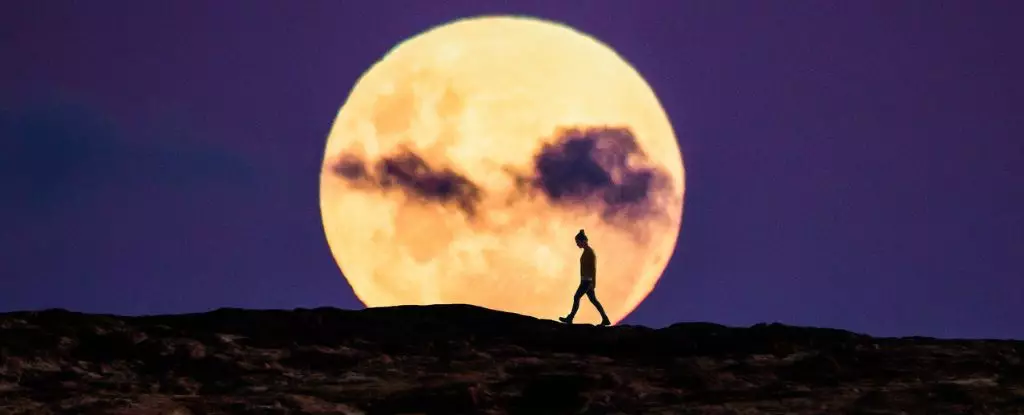This week, skywatchers are in for a visual feast as the largest supermoon of the year graces the night sky. What, exactly, constitutes a supermoon? Essentially, it occurs when a full moon coincides closely with the moon’s closest approach to Earth, a point known as perigee. This convergence causes the moon to appear notably larger and brighter than usual—approximately 14% brighter than the average full moon. While supermoon sightings can occur multiple times within a year, this particular instance stands out due to its timing and brightness.
NASA has announced that this luminous event will be observable from Tuesday evening through Friday morning, allowing ample opportunity for stargazers to indulge in nature’s splendor. However, enthusiasts should note that the peak moment will be between Wednesday evening and Thursday morning. Specifically, the moon will reach its closest point to Earth at approximately 8:50 PM ET on Wednesday, sitting at about 221,938 miles away—nearly 17,000 miles closer than an average full moon. To catch the clearest view, aiming for moonrise on either Wednesday or Thursday will provide the most dramatic experience.
Accessibility of the Supermoon
One of the most enchanting aspects of the supermoon is its accessibility. Unlike more elusive celestial events, such as meteor showers or specific constellations that may require specialized knowledge or equipment for full appreciation, the supermoon serves as a democratic spectacle. As Jennifer L. Hoffman, a prominent figure from the Chamberlin Observatory articulated, “It is something that people can see, even if they live in a city; it’s really easy to observe. You don’t need special equipment.” For city dwellers and amateur astronomers alike, this celestial phenomenon can be enjoyed without the need for telescopes or advanced gear, although sighting it through a telescope may amplify the experience by revealing intricate lunar details.
The Illusion of Size
Adding to the allure of the supermoon, when it rises near the horizon, an optical illusion comes into play that can make the moon appear even larger than it is. This effect is enhanced by the surrounding terrestrial objects, such as buildings and trees, which offer reference points for scale. As it climbs higher into the sky, this visual trickery dissipates, making mid-rise sightings particularly breathtaking. Utilizing resources such as Time and Date’s moonrise and moonset calculator can help enhance your viewing experience by pinpointing the exact rise time for your location.
A Unique Name for a Unique Moon
As if the spectacle itself weren’t enough, this supermoon also carries an evocative name: the Hunter’s Moon. This title is derived from the seasonal shift that prompts animals to prepare for the colder months, signaling a time for hunters to stock up for winter. Thus, it encapsulates both the beauty of nature and the practical aspects of survival in the wild.
For those who may be unable to witness this particular supermoon, fear not. The occurrence of supermoons is relatively frequent, often appearing in series. Astronomers predict another supermoon in November of this year. Additionally, not all supermoons exhibit the same vibrancy; sometimes, they may coincide with new moons, which diminish their luminous allure. Nevertheless, the current supermoon is part of a remarkable cluster of four full moon supermoons occurring this year, enhancing the overall celestial narrative.
This week’s supermoon is not merely an astronomical event; it is a celebration of nature’s wonders that attracts observers of all backgrounds. Whether you’re a seasoned astronomer with a telescope or a casual observer gazing upon a magnificent moonlit night, don’t miss the chance to revel in the magic of the cosmos.


Leave a Reply